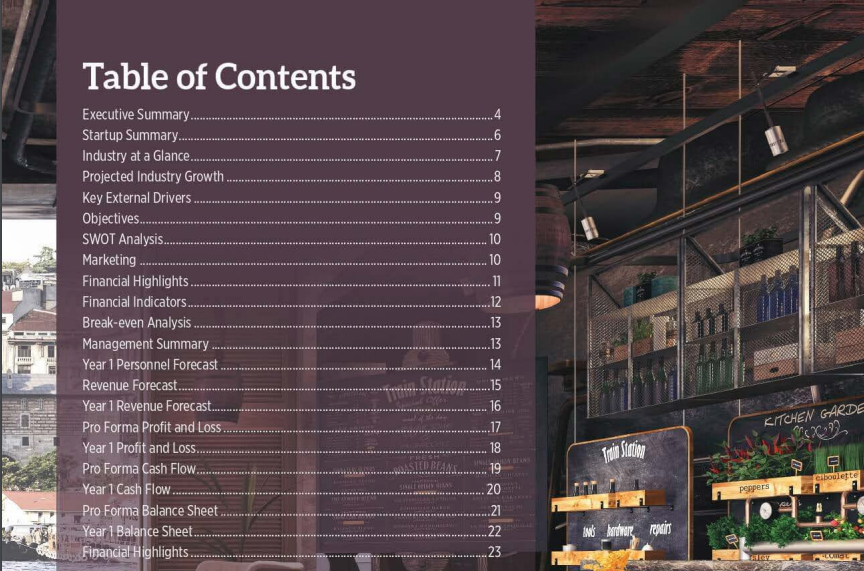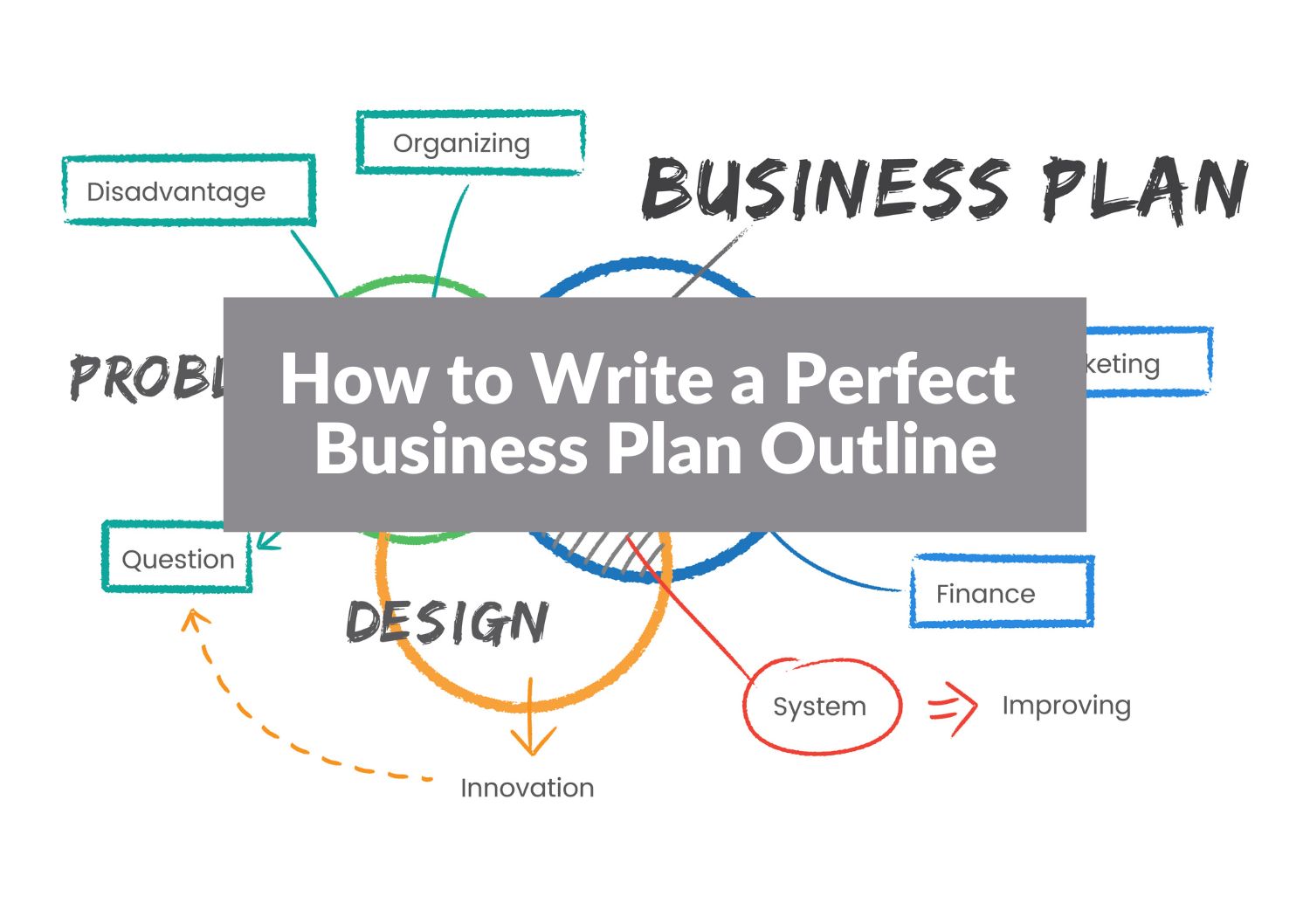How to Write a Business Plan Outline
You have a great business idea, and you have been diligently planning your business, but it is mostly in your head.
You realize the importance of putting your plan on paper, but you have never written anything resembling a business plan and have no idea where to start.
You have looked at countless startup business plan outlines online, but they do not seem to agree with each other on format or flow, so how do you know you have found a good one?
The best startup business plan outline defines the steps necessary to launch a new business.
A professional business plan consultant is uniquely positioned to help you devise a list of goals that will clearly lay out each milepost from the start of your business to its successful operation.
Note: There is no absolute right or wrong way to write a business plan, and these sections do not have to be in any particular order.
- Parts of a Business Plan Outline
- Executive Summary
- Product & Service Description
- Market Analysis
- Competitor Analysis
- Competitive Advantages
- SWOT Analysis
- Target Market
- Marketing Strategy
- Management Team
- Financial Projections
- Business Plan Outline Template
- Start a Business Plan with Business Plan Outline
- Business Plan Structure, Title Page & Table of Contents
- FAQs about Business Plan Outline
- FAQs:
Parts of a Business Plan Outline
Executive Summary
The Executive Summary is a condensed version of all of the information in the business plan. It is basically the same for your business plan as what a trailer is for a movie. Because of its purpose, there should be little or no information in your Executive Summary that is not conveyed elsewhere in your business plan. In a business plan layout, you will write at least one/two sentences about each of the following:- Problem statement
- How you will solve this problem
- Target Market, who will buy your products or services
- A brief introduction to the competition
- Financial plan summary
- Investment requirements
- Key achievements and milestones
Product & Service Description
This section is where you describe the products and/or services that you will offer. If you are offering a cutting-edge technology that your readers are likely not familiar with, then you should explain in detail how your customers would use it, the benefits of using it, and how you are pricing it. If your business will be more conventional, such as a restaurant or coffee shop, then it probably does not need as elaborate of an explanation, but it would be prudent to include any signature items on your menu. In the product and services description part of your outline for the business plan, you will briefly discuss the following:- The problem you’ll solve
- How your product or service will solve the problem
- Show your product is a good match for the problem
- Product overview
- The competitive advantage of your product
- Research and development plan
Market Analysis
Market analysis in a business plan is where you describe your industry. It should include information about the size of the industry, what the growth trends have been in recent years, and ideally, what the growth trends are projected to be in future years. If your business is one where you serve a local area and customers need to come to your establishment, then information about your location, along with the demographics in your vicinity, would be prudent. If you are serving customers remotely and in a much larger geographical area, then you can probably leave out the location and demographics. Discuss the following subpoints in your outline of a business plan.- Customer groups and market segmentation
- Buyer Persona
- Market growth prospects
- Competitors and alternatives for your product or service
Competitor Analysis
This section is where you describe your primary competitors. If the answer is not obvious, then really think about this one. Contrary to what you might think, if you think that you have no competition, a potential lender or investor will likely be put off by this claim because they will think one of three things:- You have not done sufficient research
- You are deliberately misleading
- There is no market for your business idea
- Direct and indirect competitors
- Product/service alternatives in the market
- Your competitive advantage or how you’ll win the market
Competitive Advantages
This section is where you explain how you stand out from your competition. Are you able to beat them on price? Do you offer a premium value that justifies a higher price? Do you or anyone on your management team have an extraordinary amount of experience in your field? Do you have a prime location? These are possible advantages to consider but not a comprehensive list. Discuss your competitive advantages by discussing these points.- How your product or service is better than the competition
- How you will maintain this advantage
- Can you create or enhance your competitive advantage?
SWOT Analysis
SWOT Analysis is an abbreviation for Strengths, Weaknesses, Opportunities, and Threats. Strengths and Weaknesses are for comparing yourself to your competitors, while Opportunities and Threats are external factors. For example, suppose you want to start a brewery. If your beer selection is smaller than other nearby breweries, then that would be a weakness. However, if any politicians or organizations were to begin lobbying to raise the drinking age to 30, that would be a threat, not a weakness, because it would affect everyone in your industry, not just you. SWOT analysis is pretty straightforward but you will need to put some thought into it.Target Market
Realistically, your business cannot be everything to everyone. Consider Walmart and Target. Walmart usually has lower prices, but Target usually has wider aisles, more clerks on the floor to assist you, and more checkout lanes open for quicker turnarounds. To use your advertising resources most efficiently, you need to assess the total addressable market and then assess the segments of your market most likely to buy from you. You might consider your Competitive Advantages and then try to discern which customers would likely appreciate those advantages the most. Talk about these points in your target market section.- Size of your Target market
- Ideal customer
- Dynamics of your target market
- The growth trajectory for new businesses in your target market
Marketing Strategy
What tactics will you use to reach your target market? Will they be receptive to traditional media outlets, such as print, radio, or television? Or are they likely to spend more time using social media on their computers and phones, thereby warranting a pay-per-click model, such as Google Ads or Facebook Ads? Discuss the following aspects of your marketing strategy in this section of the business plan outline.- Marketing Plan
- The marketing tools you will use
- Budget for the marketing strategy
- Timelines
- Short-term and long-term goals of your marketing strategy
Management Team
The management team section in a business plan is where you detail the professional background of yourself and any other key owners or managers in your business. A good way to show this information would be in paragraph form, similar to an “About the Author” section of a book. A potential lender or investor will want to know why your team has a better chance of making your operation successful than any John or Jane Doe on the street, and this section of your plan will be the best opportunity to answer that question. The management team section of your business plan will discuss:- Management team introduction
- Management team gaps
- Personnel Plan or who you will need to hire
- Key people on your team
Financial Projections
The financial plan section of a business plan is where you show how much revenue you expect to generate, what expenses you expect to incur, and what you expect your profit to be. A sound financial model should, at a minimum, include Income Statements, Cash Flow Statements, and Balance Sheets that project three years or more into the future. Many lenders and investors will want to see five years, as well as the first year being broken into monthly projections. When writing financial projections in your outline for a business plan, briefly discuss these.- Revenue and Sales Forecast data
- Expected expenses
- Profit and loss projection
- Cash flow projection
- Projected balance sheet
- How you’ll use funds
Business Plan Outline Template
- Executive Summary
- Problem Statement
- Solution
- Target Market Description
- Competition Analysis
- Financial Summary
- Funding Requirements for Business
- Milestones and Traction of your Business
- Business Overview
- Business Location
- Company History
- Key People
- Product and Services Brief
- Business Objectives and Goals
- Short-term and long-term business goals
- Competitor Analysis
- Spot Direct and Indirect Competitors
- SWOT Analysis for Competitors
- Competitors and alternatives
- Competitive advantage
- Market Analysis
- Market Segmentation
- Target market segment strategy
- Market needs
- Market trends
- Market growth
- Key customers / Customer persona
- Future markets or Growth Plan
- Product and Services
- Problem Statement
- Solution of the Problem with our Product or Service
- Validation of Problem and Solution.
- Product Overview
- Product Competition Analysis
- Roadmap/Future Plans for Product Development
- Operational Plan
- Business Goals
- Assign Responsibilities and Tasks
- Outline Resources
- Business Structure and Management
- Sole Proprietorship/LLC/LLP/Corp
- Financial Analysis
- Revenue and Sales Forecast
- Expenses
- Projected Profit and Loss
- Projected Cash Flow
- Projected Balance Sheet
- Personnel Plan
- Use of Funds
- Marketing and Sales
- Marketing Plan
- Sales plan
- Location and Facilities Description
- Technology or Marketing Methods
- Equipment and tools for Marketing
- Appendix
Start a Business Plan with Business Plan Outline
Trying to create all of these sections for your business plan may seem overwhelming.
Just remember that a business plan is intended to be a roadmap that can be adjusted as you monitor the results of your business, so none of this is set in stone.
You can also download our 300+ free business plan templates covering a wide range of industries.
A good business plan consultant should be equipped to research and format data that will outline projected sales, profits and losses, cash flow, and the balance sheet.
The business plan should include any tables that are industry-specific or necessary, and close with appendices that outline projections for the first year of operations.
A professional business plan writer can create an easy-to-follow and implement the best startup business plan outline that you can confidently take to investors and loan officers. It will stand up under even the most rigorous scrutiny.

Want to write a business plan?
Get our business plan writing service now!
Business Plan Structure, Title Page & Table of Contents
Your business will start with a table of content, no matter when you write it.
The title page should be designed well and look professional. You may need to hire a designer for creating your business plan title page. However, you can also make use of our business plan title page designs.

Access our free business plan examples now!
FAQs about Business Plan Outline
The goal of a business plan is to effectively present your business idea to potential investors.
Keep the structure of your business plan in a logical way so that everyone can understand your business idea by the end of the business plan.
Use our business plan outline to structure your business plan well.
A business plan outline shows sections and subsections of your business plan.
A business plan outline will include these sections.
- Executive Summary
- Product and Service Description
- Market Analysis
- Competitor Analysis
- Competitive Advantages
- SWOT Analysis
- Target Market
- Marketing Strategy
- Management Team
- Financial Analysis and Projections
Articles & Templates Related to Business Plans
Hire WiseBusinessPlans’ Plan writers if you need a business plan writer!
FAQs:
A business plan outline is a structured framework that helps entrepreneurs organize their thoughts and ideas into a comprehensive document. It serves as a roadmap for the business, outlining its goals, strategies, financial projections, and other key details.
A business plan outline provides clarity and direction for the business owner and potential stakeholders. It helps to identify potential risks and challenges, set realistic goals, attract investors or lenders, and serve as a reference point for decision-making and business growth.
The key components of a business plan outline typically include an executive summary, company description, market analysis, product or service offering, marketing and sales strategy, organizational structure, financial projections, and a conclusion.
To create a business plan outline, start by defining your business idea and conducting market research. Then, organize your thoughts into sections based on the key components mentioned earlier. Write concise summaries for each section, focusing on the most important information.
Yes, there are various templates and resources available online that can guide you in creating a business plan outline. These templates provide a structure and prompts for each section, making it easier to organize your thoughts and ensure you include all the necessary information.





















First of all, Your blog is well-written. Secondly, I want to say that A business outline is very important. I wanted one for my business. Could your team help us?